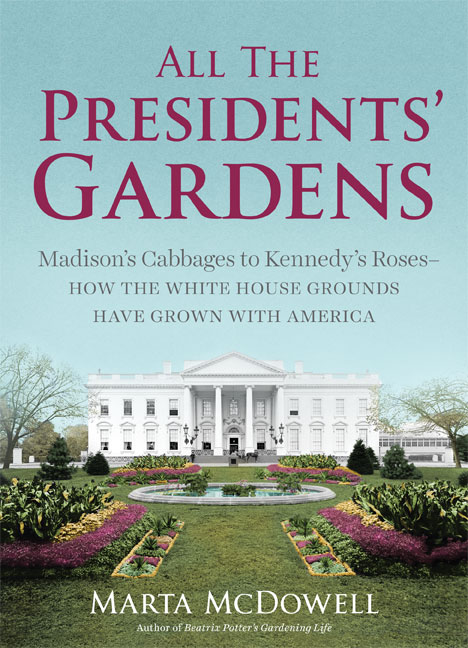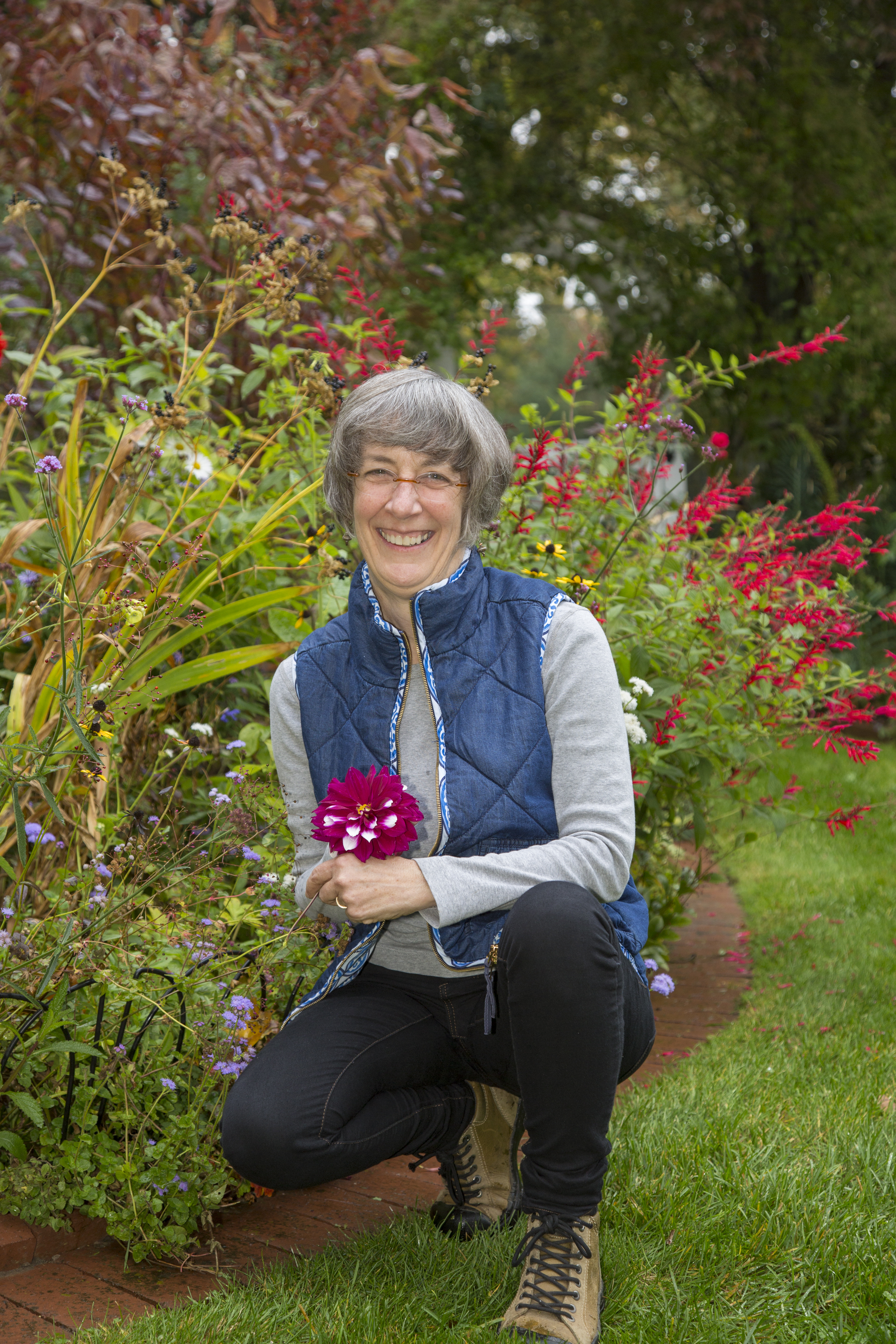SG545: From Passionate Plantsman George Washington to the modern Kitchen Garden of Michelle Obama in All The Presidents’ Gardens with Marta McDowell
Marta McDowell combines her love for history and gardening in her books and the trend continues with All the Presidents’ Gardens. In her book, Marta curates facts and stories - from the fascinating to the charming - about each of the Presidents’ gardens and their significance over the years. This interview offers an in-depth look into the delightful aspects of the White House Grounds and how they have evolved along with the gardens of America.
Help a gardener + their garden grow... Please Share this Episode
“Don't judge each day by the harvest you reap but by the seeds that you plant.”
― Robert Louis Stevenson.

Interview Questions
Marta, how did you come to be a garden history writer?
Time Stamp: 10:40
How do you incorporate gardening into your daily life?
Time Stamp 14:35
Do your horticulture/landscape history students inspire you, especially with your work as a writer?
Time Stamp: 16:15
How on earth do you determine whether an image will make it into the book and how do you secure the rights to use these historical images?
Time Stamp: 19:05
Were there any illustrations or images you wanted to secure but were unable to for various reasons?
Time Stamp: 24:05
How were the early White House grounds laid out?
Time Stamp: 27:55
You shared a sweet story of Jefferson’s pet bird – a mockingbird – named Dick. Dick was unquestionably his "favorite" mockingbird and you wrote that Dick’s cage had a special place in Jefferson’s study in the White House.
Time Stamp: 34:50
Any new homeowner who’s walked into a terrible garden situation can totally relate to the state of the White House garden of James and Dolley Madison in 1811. Can you set the scene for the listeners?
Time Stamp: 39:55
There are parts of this book that touch on the history of American Gardening in general. One that comes to mind is where you share about the impact of the Shakers.
Time Stamp: 43:35
I wanted to spend some time chatting with you about one of the most charming presidential gardeners to me – and that’s John Quincy Adams. Can you please share to the listeners the excerpt you wrote about him?
Time Stamp: 46:00
In your opinion, is garden mastery easier to come by these days with all of the online resources available?
Time Stamp: 51:25
The 1800’s was an exciting time for the White House garden despite the Civil War. Why is that?
Time Stamp: 53:55
There was a designer that had come to the White House at this time and that was Andrew Jackson Downing. How did his story end and what would the White House grounds looked like if Downing had been able to design them?
Time Stamp: 55:25
I was taken with the story about Mary Todd Lincoln and her use of bouquets. Let’s have you read that charming passage on p.99 and then tell us about how bouquets were used as a substitute for formal visits.
Time Stamp: 58:35
The late 1800’s kicked off with the wedding of Grover Cleveland. This was the beginning of what you call the “gilded gardens”. What are some of the extravagances that especially stood out to you?
Time Stamp: 1:01:55
You shared a picture of a campaign button for President McKinley in the Still Growing FB group, and it’s also in your book. He loved carnations, but his wife preferred pansies. Tell us about this first family in terms of the garden.
Time Stamp: 1:05:10
Can you highlight some of the big changes that took place in the White House garden once the Roosevelt’s moved into the White House?
Time Stamp: 1:07:10
How did the Cherry Tree get introduced and what is its connection to the White House?
Time Stamp: 1:09:25
Here’s a term I didn’t realize that has a connection to the White House – American Beauty. Why is that?
Time Stamp: 1:11:50
How did Beatrix Jones Ferrand get under the skin of Colonel Spencer Cosby – the engineer responsible for the White House – and what impact did she have on the White House garden?
Time Stamp: 1:13:40
In 1939, the British monarchy were set to come to the White House. First Lady, Eleanor Roosevelt, was worried that the White House gardens wouldn’t measure up to British standards. In Eleanor Roosevelt’s classic humor, what did she do?
Time Stamp: 1:17:00
In your chapter on the 1940s-1990s, you begin with Harry Truman. Truman loved porches and his passion for it changed the White House.
Time Stamp: 1:20:05
When the Kennedy’s arrived, the fashion-forward renovations extended to the White House grounds. How did Rachel Lambert Mellon, also known as Bunny, change the White House grounds?
Time Stamp: 1:13:40
Rose garden diplomacy is something that Jimmy Carter employed as a setting for his talks with foreign diplomats. He was also a farmer himself. Please expand a bit more on that, Marta.
Time Stamp: 1:26:25
Let’s pretend you and I are going to visit the White House today. What would you be particularly excited to show me in the Obama Presidential Gardens?
Time Stamp: 1:27:50
You close the book with some reference sections – one of which is a nice little section on the First Gardeners – The 14 men who have planted for the presidents over the years. What are your thoughts on this group of men?
Time Stamp: 1:32:20
There is an embossed flower on the book cover. What is it and is it significant to the White House grounds?
Time Stamp: 1:34:35
Listen to the Show
Subscribe to Still Growing
You can always find Still Growing on iTunes or on my favorite app: Stitcher Radio.

What listeners are saying...
I never write reviews but this is the best gardening podcast out there. Jennifer has interesting topics and guests and is not one bit annoying like some others are. I love that she involves her kids at the end of the podcast - usually with poetry or music. Really good podcast.
- Barbcfc, Mar 23, 2016
Still Growing is one of the reliably informative gardening podcasts from North America. The format consists of an intro (personal gardening status chat, seasonal remarks), an extended interview with a guest, and an outro with funny outtakes, side remarks, and some chatter (poems, readings) from the host's children. The podcast is focused on reliable knowledge - the guests are typically experts like academics, master gardeners, gardening entrepreneurs or public garden leaders. The intro and especially the outro give it a homey feel. Given I live in the high northern region, just a little below the Polar Circle, I'm always looking for more cold-weather oriented gardening information. Jennifer Ebeling is in Minnesota, so that's helpful to me! Vegetable gardening (my main interest) gets a good share, but is not predominant. Most topics transcend your specific gardening interest and are applicable to many styles: landscaping principles, vermicomposting, greenhouses. The episodes are typically an hour long, which is just fine for me.
- cwaigl, May 29, 2014
Best gardening podcast out there. Her preparedness leads to a good interaction with the guests and brings out the best in them. Very informative and yet personable.
- Corn bug, June 15, 2016
This is a great podcast. Really well produced and organized with good sound quality. I love the mix of information and personal touches. Jennifer has great guests and asks the best questions. You can tell she really does her homework. I listen to several gardening podcasts and this is my absolute favorite!
- So Cal Gardengirl, June 19,2016


[…] Sharing Nature's GardenEpisode SG544 […]